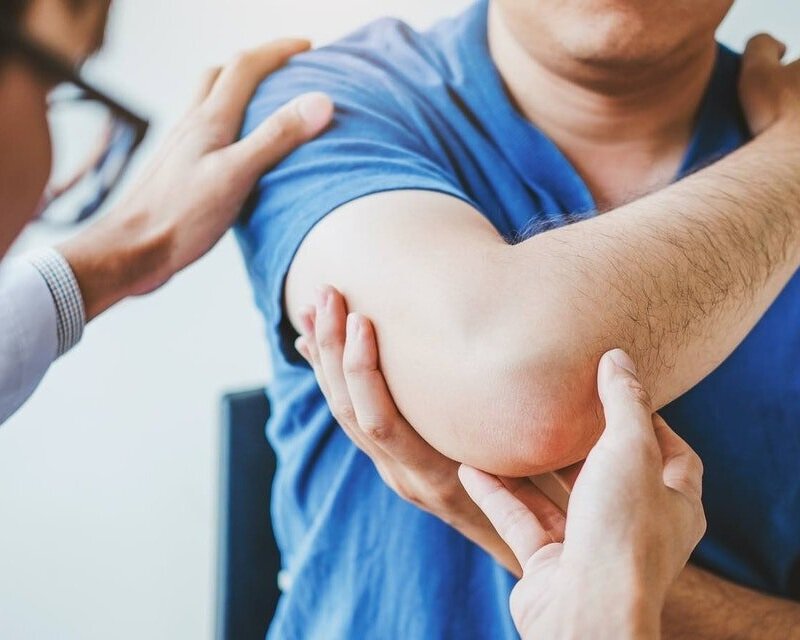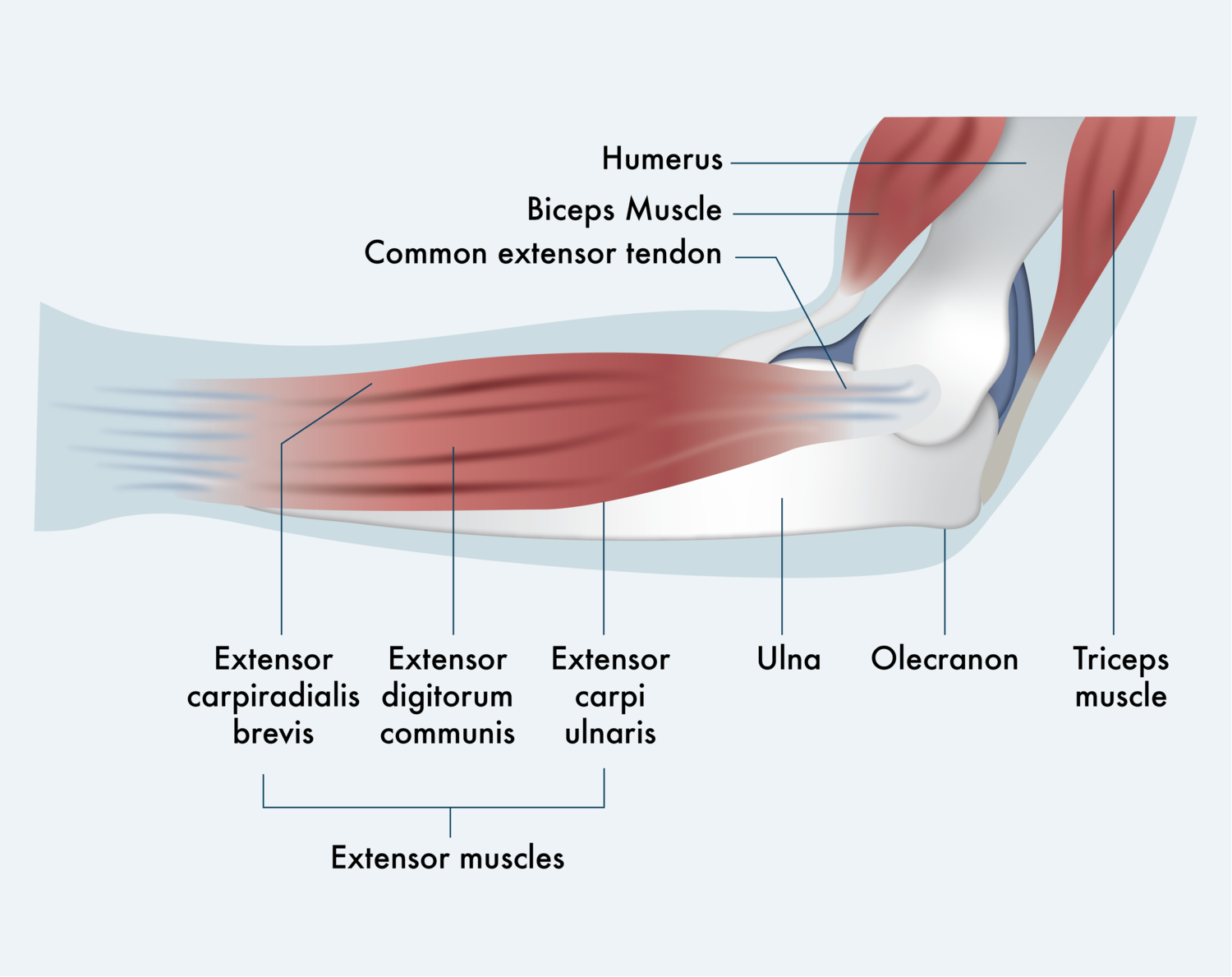The Elbow

The elbow is an essential hinge joint in the upper extremity. Bending this joint is fundamental to daily activities such as eating, grooming, and exercising. The elbow is at risk for irritation during repetitive stress or injury during a fall.
If you’re experiencing elbow pain, call one of our offices or book an appointment online to get started.
Elbow Anatomy
The elbow consists of three bones called the humerus, radius, and ulna that come together to form a hinge joint. This joint allows for flexion and extension of the forearm as well as a small amount of rotation to aid in daily activities. Attached to the bones of the elbow are flexor and extensor tendons that travel throughout the forearm and aid in the motion of the forearm, wrist, and hand. Tendons in this area are not only important for motion but also provide stability to the elbow.
The Biceps and Triceps muscles are crucial muscles that are responsible for most of the strength of the upper extremity. These muscles have tendons that attach to the elbow. Not only are there bones and muscles in the elbow joint but there are also important nerves that travel through this area, notably the ulnar nerve.


What causes elbow pain?
What causes elbow pain?
There are many causes of elbow pain. As the elbow joint is commonly used in most daily activities it is at risk for repetitive stress injuries such as tennis elbow, golfers elbow, biceps tendonitis, or cubital tunnel syndrome. Not only is it at risk for repetitive stress but due to its location, the elbow is also commonly injured during a fall. A fall on the elbow or wrist can cause an elbow fracture, dislocation, or tear to the biceps or triceps tendon.
Treatment
At Pacific Crest Orthopedics, we customize a treatment plan to meet your individual needs. For the elbow, some of the most common treatments can include physical therapy, use of anti-inflammatories, the use of a sling or brace, activity modification, or different types of injections. For some conditions, surgery is
indicated as the best option. See more on our surgery treatments.
Ephraim Dickinson, MD at Pacific Crest Orthopedics has extensive experience treating your elbow pain and providing therapies to prevent future problems and to keep you active and healthy. Don’t continue to suffer from elbow pain or immobility. If you have questions about elbow pain, call Pacific Crest Orthopedics in San Francisco or use the online booking tool to schedule an appointment today.

Real Stories, Real Recovery.



